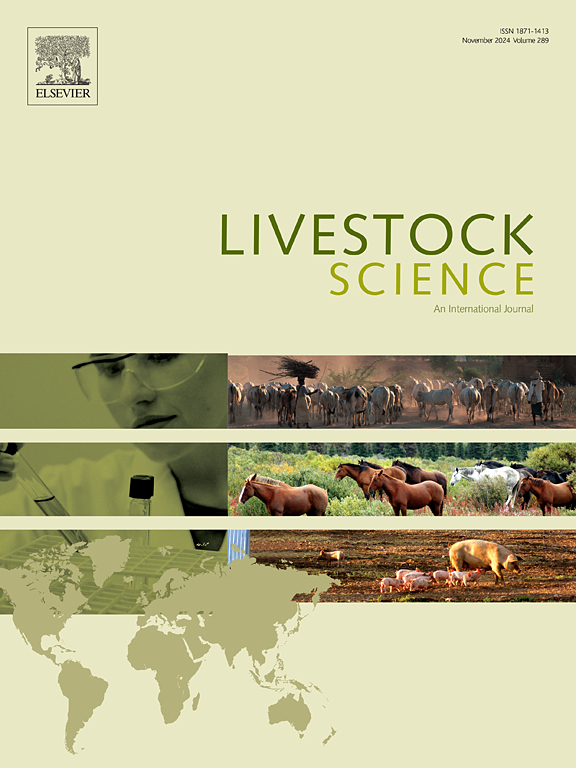奶牛舍二氧化碳、甲烷和氨排放的特征和缓解措施
IF 1.8
3区 农林科学
Q2 AGRICULTURE, DAIRY & ANIMAL SCIENCE
引用次数: 0
摘要
农业部门是全球温室气体排放的主要来源,其中奶制品生产是一个重要来源。在此背景下,本研究旨在描述奶牛舍内主要气体 CO₂、CH₄ 和 NH₃ 的排放特征,并评估减少这些排放的策略。在奶牛舍内,CO₂、CH₄ 和 NH₃ 排放的主要来源与动物的肠道过程和奶牛舍内沉积的废物有关。CO₂ 主要来自动物呼吸和有机物的分解。CH₄ 通过瘤胃中的肠道发酵和粪便的厌氧分解产生。此外,尿液中的尿素经酶分解后释放出 NH₃。在奶牛舍内,通过各种方法来缓解 NH₃已初见成效。通过添加补充剂和控制蛋白质摄入量来优化动物饮食,有助于减少肠道发酵产生的甲烷。加强粪便管理方法,包括分离粪便和尿液、调整粪便 pH 值和增加清洗频率,可有效减少奶牛舍内的氨气和甲烷排放。然而,要实现大幅减排,还需要在设施之外进行有效的废物管理。本研究通过探讨奶牛场的排放源和潜在解决方案,为正在进行的可持续畜牧业生产对话做出了贡献。本文章由计算机程序翻译,如有差异,请以英文原文为准。
Characterization and mitigation measures for carbon dioxide, methane, and ammonia emissions in dairy barns
The agricultural sector is a major contributor to global greenhouse gas emissions, with dairy production being a significant source. In this context, the study aims to characterize CO₂, CH₄, and NH₃ emissions—key gases in dairy barns—and to evaluate strategies for mitigating these emissions. Inside dairy barns, the primary sources of CO₂, CH₄, and NH₃ emissions are linked to the enteric processes of the animals and the waste deposited within the dairy barns. CO₂ mainly originates from animal respiration and the decomposition of organic matter. CH₄ is generated through enteric fermentation in the rumen and the anaerobic decomposition of manure. Additionally, NH₃ is released from the enzymatic breakdown of urea in urine. Mitigation efforts have shown promise within dairy barns through various approaches. Optimizing animal diets by incorporating supplements and controlling protein intake helps reduce methane production from enteric fermentation. Enhanced manure management practices, including separating feces and urine, adjusting manure pH, and increasing cleaning frequency, are effective in minimizing ammonia and methane emissions within dairy barns. Nevertheless, achieving significant emission reductions also requires effective waste management beyond the facilities. This study contributes to the ongoing dialogue on sustainable livestock production by addressing both emission sources and potential solutions in dairy farming.
求助全文
通过发布文献求助,成功后即可免费获取论文全文。
去求助
来源期刊

Livestock Science
农林科学-奶制品与动物科学
CiteScore
4.30
自引率
5.60%
发文量
237
审稿时长
3 months
期刊介绍:
Livestock Science promotes the sound development of the livestock sector by publishing original, peer-reviewed research and review articles covering all aspects of this broad field. The journal welcomes submissions on the avant-garde areas of animal genetics, breeding, growth, reproduction, nutrition, physiology, and behaviour in addition to genetic resources, welfare, ethics, health, management and production systems. The high-quality content of this journal reflects the truly international nature of this broad area of research.
 求助内容:
求助内容: 应助结果提醒方式:
应助结果提醒方式:


